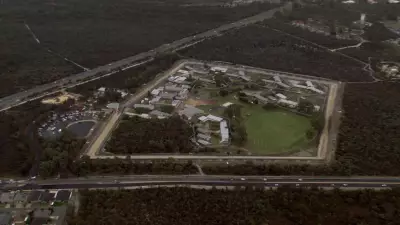
Workload Pressure Eases for Infrastructure Department Staff
Employees at the Department of Infrastructure, Transport, Regional Development, Communications, Sport and Arts are reporting significantly less feeling of being overwhelmed by their workloads, according to the department's recently released 2025 staff census results. The findings were welcomed by Department Secretary Jim Betts, who highlighted the positive shift as a key improvement.
The department was among the first agencies to release its census data, with more than 2000 staff members participating, achieving an impressive 89 per cent response rate that surpassed the overall Australian Public Service participation average of 81 per cent.
Significant Shift in Workload Perceptions
The most notable change from previous years appeared in how staff perceived their workloads. The proportion of Infrastructure staff reporting they felt "well above capacity" dropped dramatically to 12 per cent in 2025, compared to 22 per cent just one year earlier.
There was also a substantial decrease in those feeling "slightly above capacity" with much work to do, falling from 42 per cent to 36 per cent. This translated to more staff reporting they felt "at capacity" with the right amount of work (37 per cent) and "slightly below capacity" and available for more work (12 per cent).
Only 3 per cent of staff indicated they felt "well below capacity" without enough work, a slight increase from 2 per cent in 2024.
Mr Betts acknowledged that workloads tend to operate in cycles and noted the timing of the census, which was conducted immediately after the federal election caretaker period. "The department's agenda has grown rapidly since then," he added, suggesting workloads may have increased following the survey period.
Challenges in Staff Attachment and Commitment
Despite the positive workload findings, the department continues to face challenges in staff attachment and commitment metrics. While staff engagement showed some improvement, with 74 per cent of respondents saying they were proud to work at Infrastructure (up 1 percentage point) and 79 per cent would recommend it as a good place to work (also up 1 point), other indicators revealed underlying issues.
The department scored well below the APS average for staff feeling strong personal attachment to the agency (54 per cent versus 65 per cent APS-wide). Similarly, only 80 per cent of Infrastructure staff felt committed to the department's goals, compared to the APS average of 88 per cent.
Mr Betts suggested this consistent pattern since the department's establishment in 2020 might reflect its diverse functions. "People are more likely, intuitively, to see themselves in 'Health', 'Education' or 'Defence' than in a complex structure like Infrastructure, Transport, Regional Development, Communications, Sport and the Arts," he explained.
Improvements in Wellbeing and Innovation Culture
The census results revealed several other positive developments within the department. Significant improvements were recorded in leadership, innovation, and staff wellbeing areas.
More than 80 per cent of staff agreed their supervisors engaged with them on future challenges and could deliver difficult advice while maintaining good relationships.
On innovation, 55 per cent of staff said the agency inspired them to find new or better ways of doing things, a substantial increase from 47 per cent in 2024. Additionally, 49 per cent said the department supported the notion that failure is part of innovation, up from 42 per cent.
Wellbeing metrics showed notable gains, with 73 per cent of staff satisfied with health and wellbeing policies (up 7 percentage points) and three-quarters feeling fairly remunerated for their work (up 5 points).
Mr Betts committed to building on these improvements, highlighting plans to invest in tools and technology to enhance productivity, improve internal communications, and focus on mobility opportunities and support for neurodivergent staff.
The Infrastructure Department joins other agencies like Home Affairs and Parliamentary Services in early release of their 2025 census results, with most departments expected to publish findings when the Public Service Commissioner releases the annual state of the service report.





